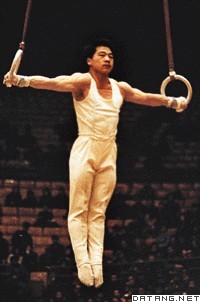1) stationary rings


静止吊环
2) stationary thrust collar


静止止推环
3) static ambient


静止环境
1.
Research on the behavior of obstructed round buoyant vertical jets in static ambient, 2, analysis on the behavior of flow field;
静止环境中有阻力圆盘浮力射流特性的研究——(II)流场特性分析
2.
Research on the behavior of obstructed round buoyant vertical jets in static ambient, 1,verification of mathematical model and numerical method;
静止环境中有阻力圆盘浮力射流特性的研究——(I)数学模型及计算方法的验证
3.
The three-dimensional turbulent model considering buoyancy was used to simulate the buoyant flow from square orifice in static ambient.
建立了静止环境中正方形孔口浮力射流的三维湍流模型,考虑浮力对射流的影响,采用混合有限分析数值格式来离散求解数学模型,给出了其数值模拟结果。
4) stationary ring


静止环
5) stationary seal ring


静止密封环
6) annual static cascade


静止环形叶栅
补充资料:吊环
| 吊环 rings 男子竞技体操项目之一。吊环运动起源于法国。早期的吊环动作,只有悬垂、支撑和摆荡动作。1896年被列为国际比赛项目。现代比赛用吊环为用钢索悬挂在高5.80米立架上的两只木环,环内径20厘米,横截面直径 2.8厘米,悬垂点间距50厘米,木环下沿距地面 2.55~ 2.85米。比赛成套动作由各种摆动、用力动作和静止姿势组成。50年代以前吊环比赛基本上是力量的比赛,成套动作中有大量的静止用力动作。60年代后期,日本运动员发展了吊环的直臂大回环技术。70年代革新了护掌,促进了吊环技术的进步。到了80年代吊环自选动作的结构更趋于合理,朝着动、静结合,快慢多变的方向发展。
|
说明:补充资料仅用于学习参考,请勿用于其它任何用途。
参考词条
